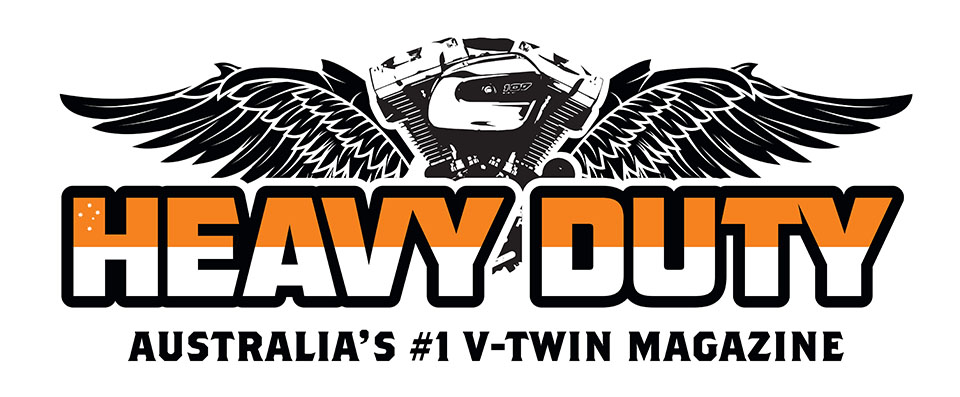issue 181
/1960: Aermacchi to the 2022 Low Rider ST
Only two years ago I wrote about the history of motorcycle windscreens and now, with the coming of a brand new Harley fairing, it’s a good time to take a look back to the beginning of Harley’s endeavours with going further and faster on both the road and racetrack. It was the fixed fairings that made it possible.
Now don’t say, “Oh, back to the parts bin and a paint job.” No this fairing is totally new because if my guess is right, it’s Harley’s pathway from the old 1979 Tour Glide fixed fairing or as we know it today, the Road Glide Sharknose. It was this Sharknose Harley; not the Batwing that won the 2021 King Of The Baggers racing series with Kyle Wyman riding #33 and claiming for next season the famed Harley plate # 1.
Early in the Bagger series, It was Indian Challengers leading the battle, Harley had to pull out all the stops to take the title. That was tough since the Indian was a relatively all-new engine and frame while the Road Glide was based on the 2008 MY09 Touring frame. So what does Harley need to do next? It simply needs a modern frame to go with its Milwaukee-Eight 131 crate engine to keep plate #1 for years to come.
The new 2022 Low Rider ST has an aero-designed, fixed fairing similar to the 1974 Project Nova V4 tourer that was never built in leu of producing the Evolution engine of 1984. But that fairing found duty in the 1984 FXRT touring and police bikes. And to this day it is the standard of custom touring fairings even winning the Harley 2019 The Battle of the Kings with Matt Laidlaw’s Coast Glide FXGTS.
You know that history repeats itself so let me update issue 168 Cybercycles. Simply put, you can see that Harley actually was the leader in American motorcycle fairing aerodynamics but not the world’s. That honour probably has its gestation in aircraft designs in WWII. And then in 1953, Peel Engineering Company on the Isle of Man, home of the IOM TT racing, was the world leader in aerodynamic with its fiberglass “Dustbin” fairings. Australia got into the aero game in 1954, with the factory Moto Guzzi team bringing Peel-fitted bikes to our shores.
By 1955, Australians Jimmy Guilfoyle and Trevor Pound were racing the full Peel Dustbins fitted to their BSAs. That said, Pound, a racer and an aerodynamicist, noted in his autobiography that the full Dustbin was unstable and dangerous and banned by FIM in 1958. Not to be deterred, Pound clocked 250kph at Bathurst on his Norton 500 Manx in 1962.
So, what’s that got to do with Harley? Well, everything
Remember in 1966 and ’67 the Brits with Triumphs were beating the pants off of Harley at the Daytona 200. Harley knew about the European racing because it had bought into Aermacchi with its world winning Peel-style race fairings. The Moto Company wanted the 200 title back and in 1968 hired a couple of racing engineers in California to fix the problem with its core race bike, the 1953 KRTT flathead 750.
The engineer’s names were Jerry Branch of tuning fame, and a kid named Nolan Dean Wixom that was disillusioned by the aerospace industry and loved riding bikes. Remember, the Americans were into number-plates screens on handlebars having banned streamlining in 1962. The FIM banned full fairing bikes in 1958, but Wixom knowing about the Peel fairings and access to the CalTech wind tunnel fixed the KRTT from being at the back of the pack into winning the ’68 Daytona 200 by lapping the field! Branch’s heads and Wixom Peel-fairing raised the top speed of the 15-year-old KR 750 flat head engine from 135 to 150mph.
Then they repeated it in 1969, before the Japanese came to Daytona in 1970. Oh, in the early ’60s Honda began racing in Europe, with you guessed it, the Peel-style fairing.
While Branch went on with tuning engines and winning races, Wixom and his brother Stan continued being the biggest motorcycle fairing manufacturers in America. He realised unlike in Europe where the Cafe fairings were all the rage, that Americans rode long distances and even coast to coast like he did on his own BMW with a Peel fairing.
Before the 1968 Daytona he made a name for himself in 1965/66 when he invented the “Batwing” and made a deal with The Motor Company resulting in the 1970 Electra Glide. The Batwing would be joined by Wixom’s own “Full Dress” Saddlebags and Travelcase top box much like Harley would have later.
1967: Enter Craig Vetter the Inventor of the Harley Fixed Fairing
A young East Coast wannabe motorcycle designer graduated from school and decided to interview his idols over on the West Coast including Dean Wixom. From that Craig Vetter became perhaps the largest aftermarket provider of fixed fairings in the world with his Phantom (very similar to the Peel Dolphin but upright for touring) and Windjammers. But the important one for us then was his design of the first fixed-frame fairing on a touring Harley.
In 1973, Vetter called the Motor Company and asked would they like a big, frame mounted fairing for the FLH? And the answer was yes!
The next year Willie G approved the design and in 1975 the Vetter-Harley Liberator was introduced in Las Vegas. One of the first and most notable customers was Elvis Presley who bought several.
Almost 5,000 Liberator fairings were sold but production suddenly ceased as the fibreglass molds for the Liberator and Hondaline were destroyed in a factory fire in 1977.
In 1976 Harley-Davidson and Porsche began a collaboration to design the world’s most advanced road going motorcycle, the Project Nova.
The water cooled Nova V-4 was both a cruiser and tourer with an all new wind-tunnel tested fixed fairing. The instrument cluster was all inclusive with stereo speakers built into the fairing. It was very similar to the Wixom “Full Dress” Batwing, saddlebags and top box. The rest is history… all done a year before 1980 Honda’s GL1000 Interstate fixed-fairing touring bike.
However, Project Nova was cancelled in favour of the Evolution engine after the AMF buyout as Harley only had enough money for one project.
1980: FLT Tour Glide
The Nova fairing was fitted on the 1980 FLT Tour Glide, the direct predecessor to the Road Glide. It had a larger frame than the older FLH and a rubber mounted 80ci engine.
In order for it to handle acceptably, the front forks were given a radical steering geometry and mounted behind the steering head.
In 2019, HOG Magazine named the Tour Glide as one of its five bikes that changed the Motor Company’s history. The only faired Harley so noted; not even the Batwing got that acknowledgement.
In 1983 the FXRT Sport Glide and Police bikes were fitted with the Nova fixed fairing. But that is another story.
No matter what you have heard about the FXR in those days, its 50 horsepower is no match even for an EVO let alone an M8 117 now fitted in the CVOs and 2022 Low Rider S, Low Rider ST, Street Glide ST and Road Glide ST.
1998: Harley FLTR Road Glide … and the rest
In 1996 the Tour Glide was retired and replaced in 1998 by the Road Glide as we know it today. Almost all motorcycle manufacturers have adopted fixed fairings on their sport and touring bikes. The small fairing manufacturers are all gone except for a few like Klock Werks. Wixom went on to design the Nor’sea 27 Sailboat that was hugely successful. Vetter was commissioned to design the fairing for the 1986 Buell RR1000 concept bike and now works on environmentally friendly projects.
On 26 Jan 22, the new family of Sport Touring bikes were introduced by the Motor Company with the Low Rider ST with Nova V4-style fairing, Street Glide ST and Road Glide ST. While the Low Rider S and ST have a modern 2017 frame and engine, the MY09 Touring STs may be at the end of the line for the Grand American Touring heavyweight title.
Most importantly Harley has recognised that the younger, well-heeled riders are wanting sport tourers with performance! Simply put by Harley PR manager Paul James, “It’s a generational shift. These customers have a different mindset, many of them coming off sportbikes. They’re aggressive riders. They want a bagger but they’re performance-minded and they’re riding baggers in that way.”
The new 117-powered ST models, the Low Rider ST and Road Glide ST designed to go the distance, carry a load while doing it all faster!
In the release of the latest 2022 models, Jochen Zeitz said, “One of my personal highlights of the year was watching Kyle Wyman win the King of the Baggers series. Another example of Harley-Davidson leading the industry and dominating in the Grand American Touring and leading the way with performance baggers. Touring is at the very core of our business and of our heritage. We do it better than anyone else, and today we’re excited to showcase that innovation and excellence that makes Harley Davidson Championship winning season.” Then in the mission statement the video displayed: “Defending Champions KING OF THE BAGGERS Further, Faster.”
It’s been said that the inspiration for the Low Rider S of 2016 and 2020 was the first Mad Max movie. Thank you Australia!




